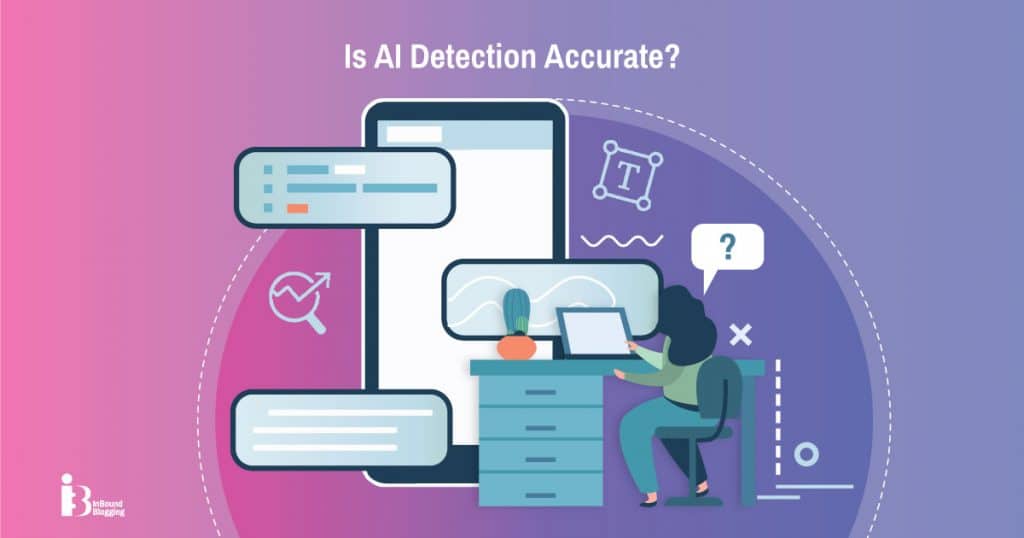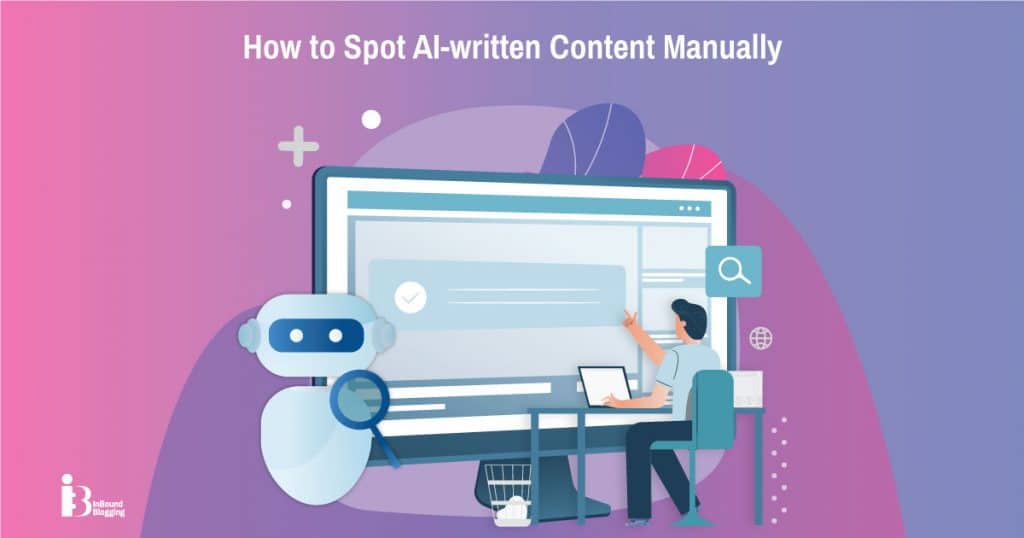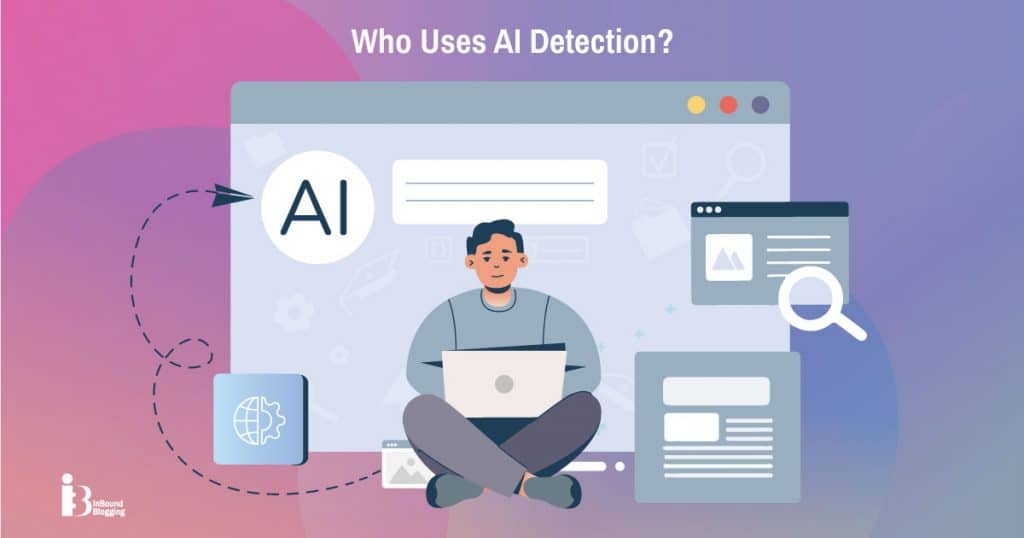Ever noticed how some online articles just don’t sound quite human? Well, that’s because they probably aren’t human-created but made by artificial intelligence (AI).
AI content detectors hold the key to spotting robot-written text, using smart tech to analyze patterns that humans typically don’t make.
Dive into a world where machines unmask machines; let’s get detecting.
Key Takeaways
- AI content detectors analyze the text using natural language processing (NLP) and machine learning (ML) to distinguish between human-written and AI-generated content.
- These detectors play a critical role in maintaining the quality and authenticity of online content, especially in search engine optimization (SEO), by ensuring originality and reliability.
- AI detectors are useful across various industries, such as marketing, journalism, education, finance, privacy protection, and history analysis.
- To outsmart AI content detectors, writers can diversify their vocabulary, avoid using repetitive phrases from AI generators, and adjust their tone to sound more conversational. This helps create genuine and engaging written content while bypassing detection tools.
- Looking for signs of AI-generated writing can aid in manually identifying machine-generated content.
What Are AI Content Detectors?

AI detectors are tools that use artificial intelligence to find out if the content was written by humans or AI tools.
These clever algorithms use machine learning, along with a process known as natural language processing. They look at the way words are put together and used in sentences to judge whether a piece of text was written by a human or not.
These tools are especially useful for search engine optimization (SEO) experts and bloggers to ensure that their work is considered original and trustworthy. If your writing somehow resembles robotic speech, these detectors could flag your content, too. So it’s good to stay informed about how they operate.
How Do AI Content Detectors Work?
AI text detection tools work by analyzing the patterns and structures of natural language. They look at clues in the way words are put together, and they use math to figure out the likelihood of whether a bot created something.
Think of AI content detectors as intelligent word watchers. These tools have studied lots of texts—billions of examples—to learn the difference between how people and machines talk and write.
They compare new writing to their large datasets of human-written texts. AI detectors use classifiers and embeddings to compare the syntax and semantics of different texts. This makes it easier for them to spot subtle differences between human-written content and AI-generated texts.
Classifiers analyze patterns in the text to make educated guesses about their origin, while embeddings represent words as vectors in a high-dimensional space, capturing their meaning and context.
These detectors are pretty clever because they know machines have a certain way with words that’s not quite natural yet. For example, they might see if the sentences are too perfect or sound too strange. Additionally, they take notes on things like perplexity or whether the same phrases keep showing up over and over again.
Let’s learn more about the mechanics of AI detection tools:
The role of classifiers in text linguistic analysis
Classifiers are algorithms that assign labels to texts based on their features or characteristics. For example, a classifier can label a text as AI-written or human-written based on the frequency of certain words, the complexity of sentences, the use of punctuation, or the presence of semantic inconsistencies. Classifiers can be trained on large datasets of texts from different sources and genres and then tested on new texts to evaluate their accuracy and reliability.
When assessing a text, classifiers look at three main factors:
- Perplexity
It’s a measure of how well a model predicts the next word in a sequence of words. For example, if the model sees the word “dog,” it might predict that the next word is “barks” or “runs”. AI texts are usually more predictable than those written by humans.
Perplexity is calculated by looking at how probable each word is in a given context, based on the language model used by the AI tool. A lower perplexity score means that the text is more likely to be generated by AI, while a higher perplexity score means that the text is more likely to be written by humans.
- Burstiness
A text’s burstiness reflects the diversity and complexity of its sentences. It is computed by dividing the number of different words by the number of sentences in a text. A text with a higher burstiness score has a more varied and complex sentence structure and length, which can signal a higher degree of creativity and originality. AI usually produces texts with more uniform sentence structure and length.
Still, classifiers are not perfect and may have limitations or biases that need to be addressed and improved. Therefore, text linguistic analysis needs to constantly update and refine its methods and tools to keep up with the rapid development of AI.
Embeddings or how AI detectors see words
Embeddings are a way of representing words as vectors in a high-dimensional space, capturing their meaning and context. For example, the word “blue” might have a vector that is close to the word “color”, but far from the word “length”. This way, AI detectors can measure how similar or different words are based on their vectors.
One application of embeddings is to detect AI writing tools, which generate text using neural networks. These tools often use embeddings to generate words that are relevant and coherent with the preceding text.
Furthermore, embeddings can also reveal some patterns or biases that are specific to the AI writing tool. AI detectors can spot AI-written texts by comparing their embeddings with other texts (human- and AI-written) that the model learned from. It’s called comparative analysis.
Is AI Detection Accurate?

Although most AI detection tools boast of their high accuracy rates, they can’t be relied upon at all times. These smart assistants have certain weaknesses, such as:
- They compare the text to a large corpus of human-written texts that may not be representative or reliable.
- They use statistical patterns and probabilities, not semantic understanding or logical reasoning.
- They may not capture the intention behind the text and may be fooled by tricks, such as using synonyms, word reordering, etc.
Therefore, you should not rely on AI writing detection alone to judge a text’s quality or authenticity. You must also use human judgment and critical thinking to evaluate the text and verify its sources, arguments, and evidence. AI writing detectors are a helpful tool, but not a definitive answer.
“Human expression is incredibly nuanced, encompassing a wide range of styles, tones, and registers. This makes it difficult for AI detectors to develop a comprehensive understanding of human language, leaving them vulnerable to being fooled by AI-generated text that closely mimics human patterns. I think this is the biggest problem because AI tools are being used to create fake news articles and even entire websites that are indistinguishable from human-authored content.” — Luciano Colos, Founder and CEO, PitchGrade
How to Spot AI-written Content Manually

Generative AI usually leaves its trace, such as a lack of depth and personality in the content, which is picked up by AI detectors. These detectors rely on spotting systematic differences between human and machine-generated content to identify AI-written text.
Unnatural word choices are often prevalent in AI-generated content. Additionally, examining the level of coherence and logical flow within the text can also help distinguish between human-written and AI-generated content effectively. If the writing feels generic or lacks human-like characteristics, it might be flagged as possibly generated by AI language models, such as GPT-3 or ChatGPT.
Some bloggers may not realize that their content unintentionally exhibits signs of being created by AI, but being aware of these indicators can help them create more authentic and engaging content for their readers.
Even better, they should use AI detectors for their own peace of mind. Three of the best AI detection options include:
- Winston AI: It detects if the text is written by a human or an AI, and provides a confidence score and a detailed report.
- Turnitin: This is a well-known tool that helps educators and students check the originality and quality of academic papers. Turnitin can also detect if the text is paraphrased or spun by an AI, and provide feedback and suggestions for improvement.
- Content At Scale: This is a tool that helps content marketers and SEO professionals monitor and optimize their web content. Content At Scale can also detect if the text is generated by AI, and provide a score and recommendations on how to improve it.
Find out more about our full selection of the best AI detectors.
The Future of AI Writing and Content Detection

AI writing and content detection will continue to evolve with advancements in AI technology, leading to more accurate and efficient detection methods. To learn more about the future of AI writing and content detection, keep reading!
Evolution of AI content detection
One of the challenges that content writers face is producing unique content that can rank well on Google and other search engines. While Google can detect AI writing, it places the highest value on quality.
As technology develops, so do the detectors, becoming more adept at identifying false information and AI-written content. OpenAI and other tech giants are continuously pushing the boundaries of AI detectors. What is more, there are an increasing number of AI humanizer tools emerging.
“Looking ahead, AI in writing and content detection is set to get even sharper, more personalized, and more intertwined with other cool AI tools. But let’s not forget the ethical side of things. We’ve got to think about privacy, make sure we’re not accidentally being biased, and watch out for AI content being used for the wrong reasons. It’s all about using this tech wisely and ethically.” — Dmitriy Shelepin CEO, Head of SEO, Miromind
Potential limitations and challenges
Even the best AI content detectors may not always accurately distinguish between human-written text and AI-generated content, leading to false positives or false negatives.
Additionally, the lack of contextual understanding poses a significant challenge for AI detector tools. This means they might struggle to identify subtle nuances and intentions within the text, impacting their ability to detect AI-generated content accurately.
These limitations suggest that, while AI detectors are advancing, they still face hurdles in achieving perfect accuracy due to their reliance on language models and the evolving nature of AI writing styles.
“There is a lot of content that is written by humans that gets flagged as AI, and it is worrisome if the tools cannot detect the difference. Pretty soon, the content may become indistinguishable for the tool to detect. This, in turn, is frustrating for content creators, who spend a lot of time and energy on the articles they write.” — Ashwin Ramesh, CEO, Local SEO Checklist
Who Uses AI Detection?

AI detection is useful for anyone involved in writing. This includes professionals working in the fields of journalism, education, book publishing, content writing, SEO, etc. AI detection tools help them catch potential plagiarism, false information, or even academic misconduct.
Additionally, if a text is flagged as AI-created, then it needs rewriting and restructuring to sound more natural so that readers find it appealing.
Besides the above-mentioned fields, however, there are several other industries where AI detectors can be quite helpful.
- Privacy protection: AI detectors can help users protect their personal information and online identity from being stolen or manipulated by AI. Detection tools can catch phishing attempts and adverse media coverage by analyzing natural language.
- Finance: Financial institutions need to ensure that their reports, statements, and documents are not manipulated or falsified by malicious actors using AI. AI writing detectors can help prevent fraud, plagiarism, and misinformation in the finance industry by identifying and flagging texts that are generated by artificial intelligence.
- Historical analysis: Historians can use AI detection tools to verify the authenticity and accuracy of historical documents, especially those that are digitized or translated by AI. They can also help detect plagiarism or bias in historical narratives.
Interested in understanding AI concepts? Here’s my ultimate guide to AI terms.
Conclusion
If you’re a content creator, you need to watch out for fake news, propaganda, and plagiarism generated by AI. Using such content can ruin your reputation and credibility. That’s why you need AI detectors. These tools can spot if a piece of writing was created by AI by looking for strange patterns and clues. The best way to avoid getting detected as AI is to use your own words, be creative, and sound natural.
AI writing and detection are changing fast, and they will affect many fields, like SEO, finance, history analysis, and privacy protection. You don’t want to miss out on these changes, so make sure you stay updated on these smart technologies and use them wisely.
Wondering what to read next? Check out our article on the top AI checkers for teachers.
FAQ
What is the role of AI detection in the writing process?
AI detection plays a crucial role in the writing process by ensuring the authenticity and originality of the content being produced. It helps writers and content creators maintain high standards of quality and integrity in their work.
How accurate are AI detectors in detecting AI-generated content?
The accuracy of AI detectors at identifying AI-generated content varies depending on the sophistication of the detection tool and the complexity of the AI model used to generate the content. Some detectors can accurately flag AI-generated text, while others may have limitations in detecting more advanced AI-generated text.
What are some popular AI detection tools?
Some popular AI detection tools include Winston AI, Turnitin, Content At Scale, and various other platforms that offer AI content detection services. These tools are designed to help users identify and verify the authenticity of content generated by an AI model.
Do AI detectors only work on text?
No, they use different machine-learning methods, such as deep learning and decision trees, to spot AI images and videos, known as deepfakes. These might look very realistic, but they are fakes. They can be used for fun, like swapping the faces of celebrities, or for harm, like spreading false information or blackmailing someone.
How do AI detectors identify AI-generated images?
AI detectors use similar machine learning algorithms to analyze image data and identify patterns that may indicate the use of AI in generating the image. These detectors can flag and verify the authenticity of images that may have been generated using AI technology.
Can AI writing detectors help stop cyberbullying?
Yes. They sort through lots of data to find mean words or phrases that might show cyberbullying. AI detectors can detect insults, threats, harassment, or hate speech. AI detectors can also alert victims, moderators, or authorities to cyberbullying incidents and provide support or intervention options.
Do law enforcement agencies use AI detectors for privacy issues?
Law enforcement agencies might use AI detectors to keep an eye on Twitter or other social media for fake accounts or illegal activities while still caring about privacy rights.
What are the potential implications of using AI-generated content without detection?
Even though AI creates new content by analyzing existing data, it can inadvertently resemble existing works, resulting in plagiarism accusations. It’s important to ensure that content used for various purposes is legitimately created to maintain trust and integrity.



